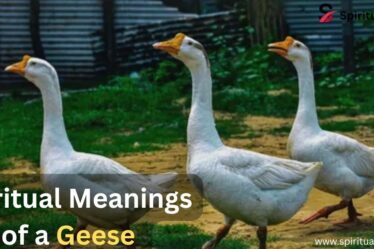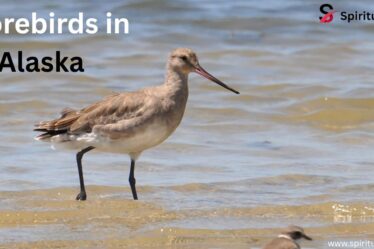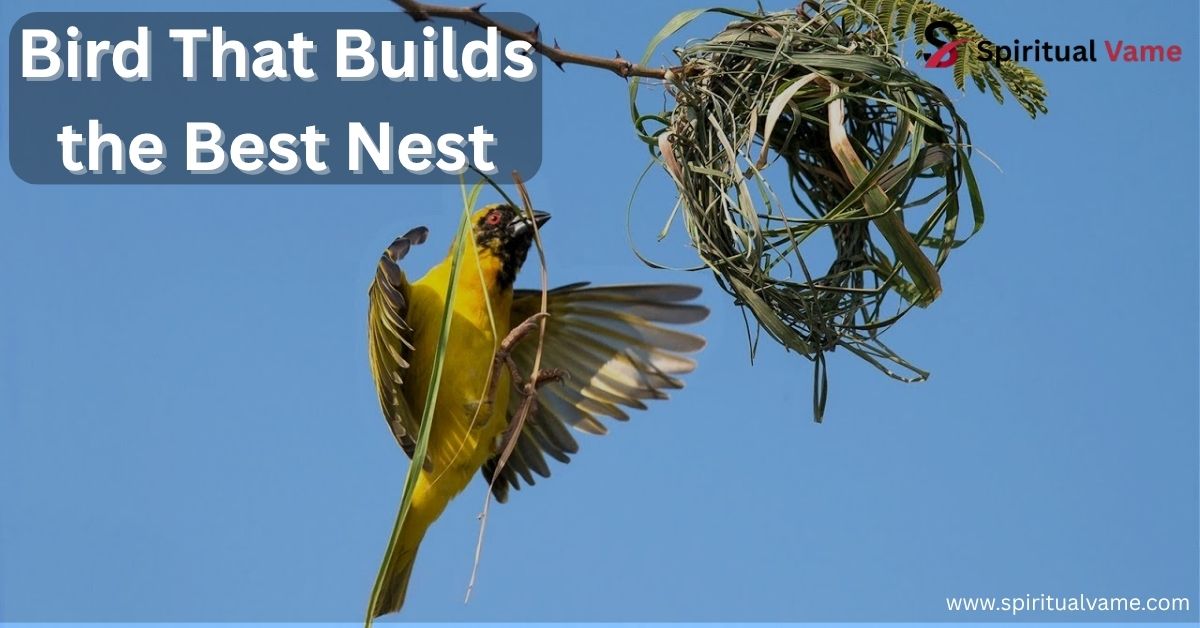
Birds are amazing builders. Each one creates a nest that suits its needs. Some nests are strong. Others are soft and hidden. But which bird builds the best nest? That’s what this post is all about. You’ll discover birds that use mud, grass, or even their own saliva. Some nests hang from trees. Others float on water or cling to cliffs. The bird that builds the best nest might surprise you. From tiny tailorbirds to giant bald eagles, every nest tells a story. We’ll explore them all. If you’ve ever wondered which bird builds the best nest, you’re in the right place. Let’s dive in and find out.
1. Sociable weaver (Philetairus socius)
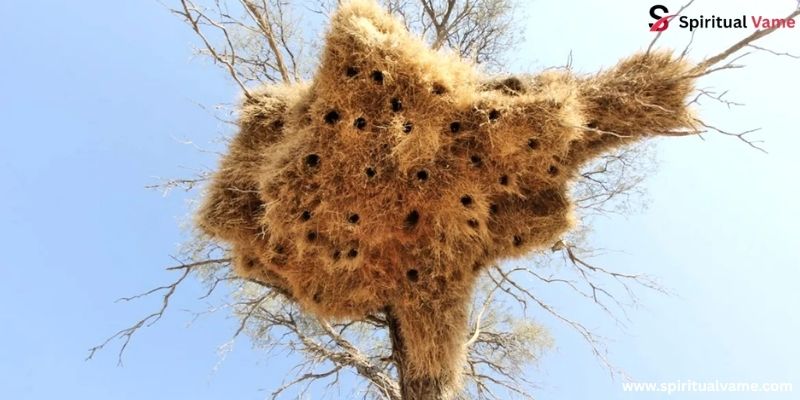
One of the most extraordinary nest builders is the sociable weaver, or Philetairus socius, found in Namibia and parts of South Africa. Does this bird builds the best nest? This little bird works as part of a team to build what may be the largest nest in the bird world. Their communal nests can weigh up to 2,000 pounds, stretch nearly 20 feet across, and hang 13 feet deep with a height of 7 feet. These nests can have over 100 chambers, each one serving a different purpose—some are used for sleeping, others for raising chicks. The materials used include twigs, grass, feathers, cotton, and anything soft they can find.
These nests aren’t just big—they’re smart. They offer thermal benefits, keeping the chambers cool during the scorching day and warm during freezing nights. The tightly-packed structure also offers strong predator protection, especially from snakes and raptors. They often build on utility poles or tall trees and sometimes share their nests with pygmy falcons, making these massive structures multi-species homes.
2. Montezuma oropendola (Psarocolius montezuma)
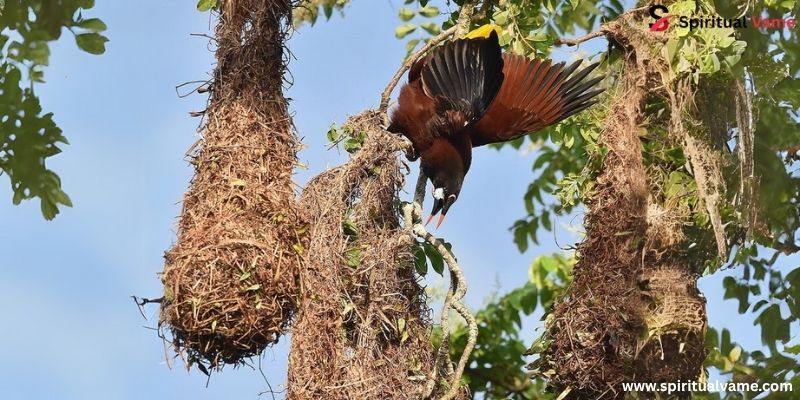
In the lush rainforests of the Caribbean, the Montezuma oropendola—Psarocolius montezuma—creates hanging nests that look like woven pouches suspended from tree branches. These long, swaying nests can reach up to 180 cm in length. Built mostly from fibres, vines, and other plant material, each tree might hold a colony of 30 to 150 nests. The birds often choose trees with wasps’ nests, as the insects help keep predators away.
Nesting here is also about power and attraction. A dominant male oversees the colony and mates with most of the females, while subordinate males wait for their chance. Their loud calls and flashy movements create a lively social scene. These nests not only offer shelter but also play a role in courtship and competition, making them both functional and symbolic.
3. Eurasian penduline tit (Remiz pendulinus)
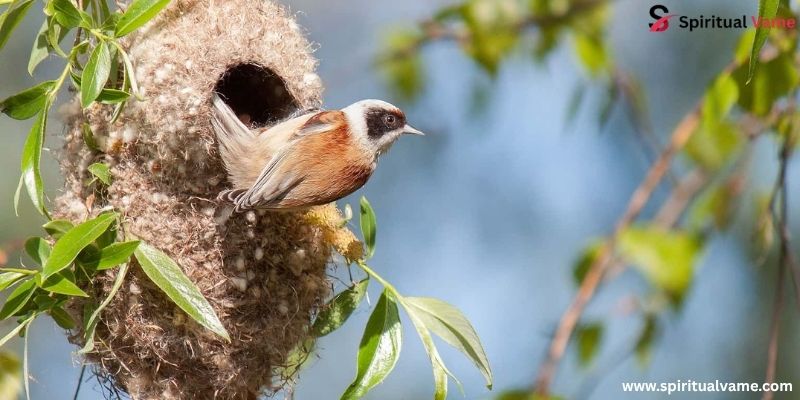
The Eurasian penduline tit, or Remiz pendulinus, is a small but clever builder found from Europe to as far south as Kenya. It builds soft, pouch-shaped nests that hang from the branches of willow or birch trees. The nests are made from plant fibres, fluffy seeds, and animal materials like sheep’s wool, often woven so tightly that they repel water and shield from wind.
What’s fascinating is the nest’s deceptive structure. The penduline tit often builds a false entrance to confuse predators. This trick makes their cozy home extra secure. Maybe this bird builds the best nest. These nests not only look beautiful but are also functional masterpieces of natural insulation and camouflage.
4. Edible-nest swiftlet (Aerodromus fuciphagus)
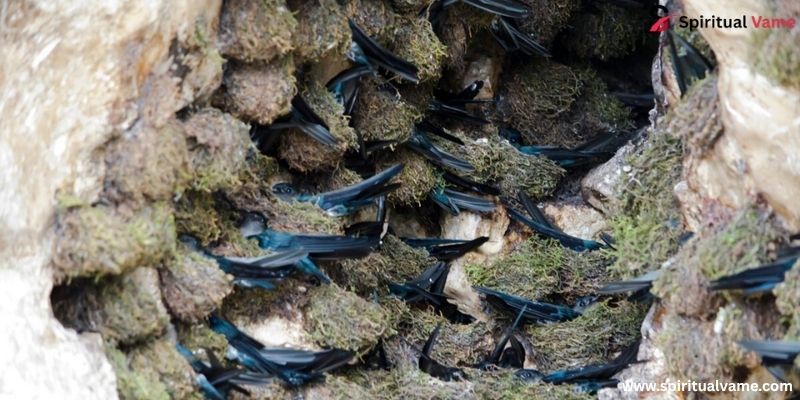
The edible-nest swiftlet, Aerodromus fuciphagus, lives in caves across Southeast Asia. It’s famous for building its nest entirely from hardened saliva, without using any external materials. These nests are rich in minerals like calcium, iron, potassium, and magnesium, and they’re highly valued, selling for over £2000 per kilogram in some markets for use in bird’s nest soup.
Swiftlets build their nests high on cliff faces or dark cave walls, where few predators can reach. They navigate these pitch-black places using echolocation, making them one of the few birds with this bat-like ability. Their sticky nests may be simple, but they’re incredibly strong and built in places where few others dare to go.
5. Red ovenbird (Furnarius rufus)
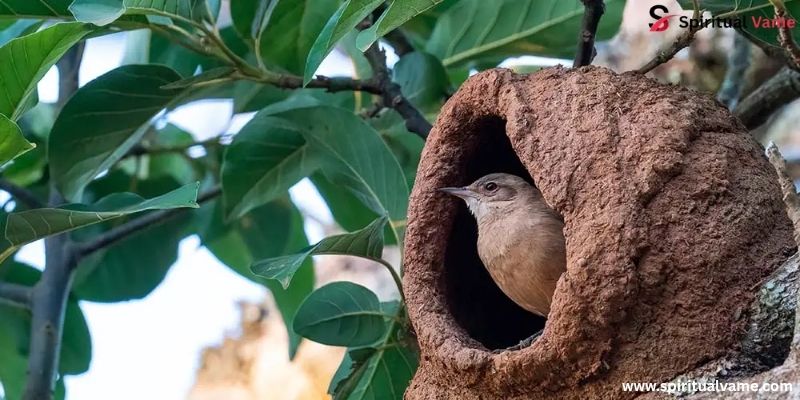
The red ovenbird, or Furnarius rufus, is known throughout Argentina and South America for its unique clay ovens. It uses mud to shape dome-like structures, often placing them on fence posts or telephone poles. These nests look like small clay kilns and are extremely durable, lasting long after the bird has left.
Each nest has a winding entrance leading to the inner chamber, protecting the eggs from predators and harsh weather. The ovenbird’s name perfectly suits its earthy, warm nest design. These nests are not just safe but also long-lasting and highly resistant to rain and wind.
6. Hamerkop (Scopus umbretta)
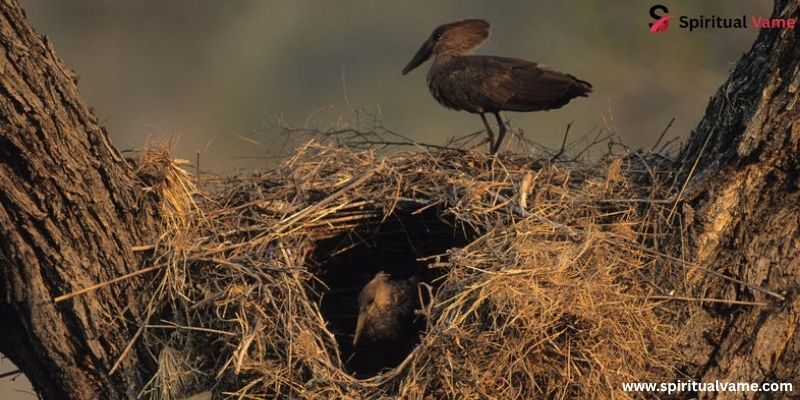
The hamerkop, or Scopus umbretta, found across Africa, Madagascar, and Arabia, builds one of the largest and heaviest nests of any bird. Each nest can be over 1.5 metres wide and made from up to 10,000 sticks. Birds place these gigantic structures in a tree fork, on a cliff, or even against a dam wall.
What’s especially odd about hamerkops is their habit of collecting brightly coloured objects—plastic bits, cloth, and even bones—to decorate the nest. They take nesting seriously, often building multiple nests a year even if they don’t use them all. It’s a mix of habit, instinct, and perhaps even showing off.
7. Gila woodpecker (Melanerpes uropygialis)
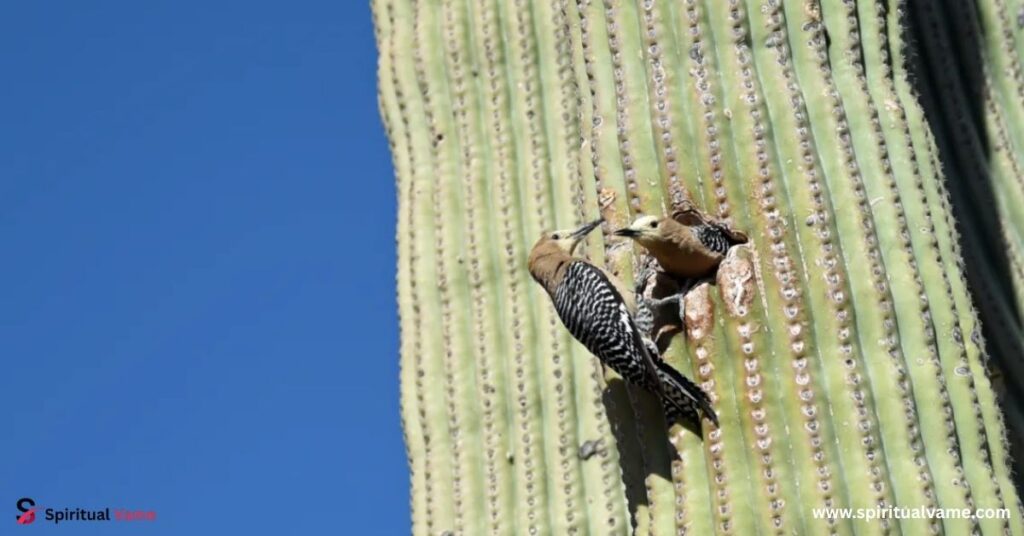
In the dry Sonoran Desert, the Gila woodpecker, or Melanerpes uropygialis, creates homes inside saguaro cacti and mesquite trees. It chisels out holes about 5 cm wide called “boots.” These cavities protect against desert heat and predators while keeping the nest cool.
The cactus secretes sap that hardens around the hole, creating a safe, sealed chamber. Over time, other animals may reuse the boot, showing how well these nests are made. The Gila woodpecker is a true survivor, adapting perfectly to harsh desert life.
8. European bee-eater (Merops apiaster)
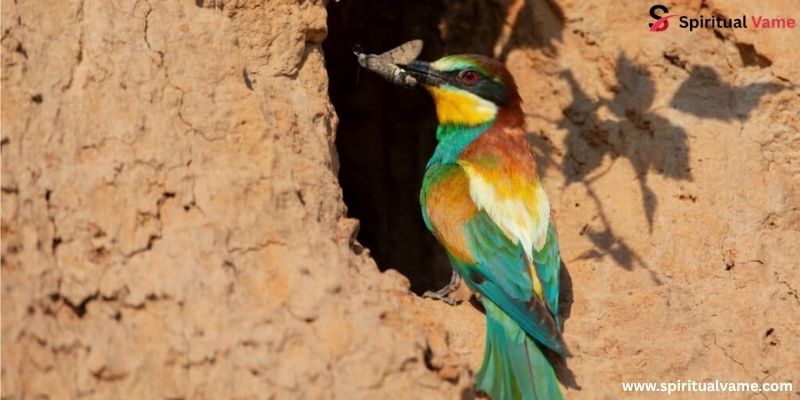
The European bee-eater, Merops apiaster, breeds across southern Europe, North Africa, and western Asia, digging tunnels about 1 metre long into sandbanks or cliffs. At the end of the tunnel lies the nesting chamber, where they lay their eggs in safety.
These birds nest in colonies, often returning to the same site year after year. Their tunnels protect against predators and keep eggs at a steady temperature. Watching a cliff filled with these tunnels shows just how communal and clever these birds are.
9. Common tailorbird (Orthotomus sutorius)
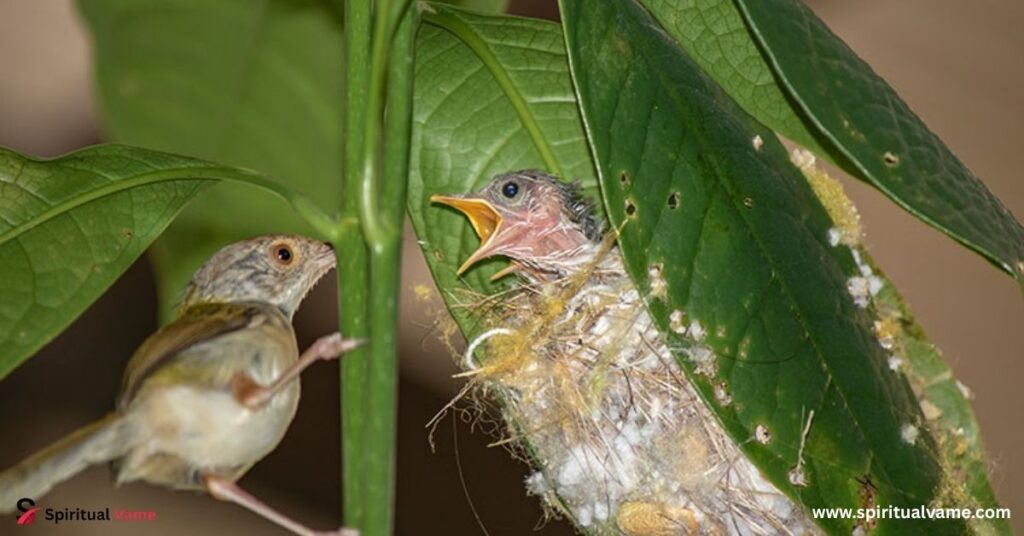
In tropical Asia, the common tailorbird, or Orthotomus sutorius, stitches leaves together using silk, plant fibres, cotton, and even downy fluff. The result is a pocket-like structure hidden in dense foliage, offering perfect camouflage from predators.
They use spider silk or thread-like materials to pierce and sew the edges of leaves. This remarkable behavior gives them their name. It’s as if they took up needle and thread to make the coziest cradle for their chicks.
10. Bald eagle (Haliaeetus leucocephalus)
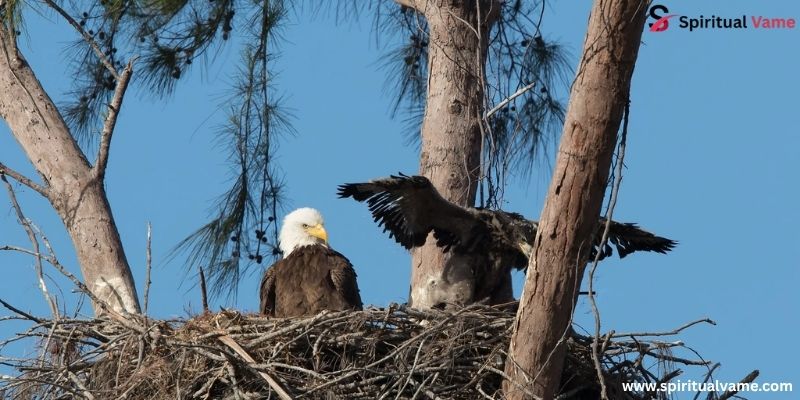
The bald eagle, Haliaeetus leucocephalus, is the national bird of the United States and one of the largest nest builders. These powerful sea eagles return to the same site each year, expanding their nests until they can weigh over a ton. Some nests have been recorded over 10 feet wide. We can say this bird builds the best nest.
They usually build in tall trees or cliffs overlooking water, perfect for spotting fish or seals below. The combination of size, strength, and reuse makes the bald eagle’s nest a true symbol of endurance and American wilderness.
The Montezuma Oropendola
As seen earlier, the Montezuma oropendola is both a skilled builder and a social strategist. Its colony structure is shaped by social hierarchies where a dominant male defends the nesting site while subordinate males wait for chances to mate. The hanging nests are not just homes—they’re part of the bird’s complex courtship dance, where vocal performances and nest displays attract females.
Choosing trees near wasps’ nests adds another layer of protection. The blend of natural defense, craftsmanship, and courtship makes this oropendola a strong candidate for building the best nest.
The Malleefowl
The malleefowl is a unique ground-dweller from Australia, building massive mound nests up to 150 feet around and 2 feet deep. These mounds are filled with organic matter and sand, which generate heat as they decompose. The bird checks the temperature and adjusts the mound to keep the eggs at just the right warmth.
It’s like having a natural incubator. The male spends up to 15 hours a day maintaining the temperature, making it one of the most attentive nest caretakers in the bird world.
The African Jacana
The African Jacana builds floating nests on lily pads and aquatic vegetation. These nests move with the water and stay hidden from predators. Males build and care for the nest, often carrying chicks under their wings if danger comes.
Floating nests are tricky to manage, but jacanas are built for it. Their long toes and lightweight bodies let them walk on water plants easily, making their nesting strategy both elegant and effective.
The Cactus Ferruginous Pygmy Owl
This tiny owl prefers cavity nests inside tree holes or abandoned woodpecker holes, especially in cacti like the saguaro. Nesting low and hidden, it avoids predators and harsh heat. It proves that even small birds need smart strategies to thrive in tough climates.
Its stealth and nesting location make it a quiet but clever contender in the nesting world.
The Sociable Weaver
Returning to the sociable weaver, it’s clear this bird sets the gold standard in teamwork and design. Their nests are so large they look like haystacks in trees. These birds are nature’s apartment builders, creating spaces that can host hundreds and even help cool or warm based on the time of day.
They deserve to be at the top of any list about birds that build the best nests.
The Edible-Nest Swiftlet
The edible-nest swiftlet impresses again with its unique building material: saliva. Found high in dark caves, these nests may be small, but they’re made in extremely hard-to-reach places. Their value, simplicity, and mystery make them unforgettable.
The Bowerbird
The bowerbird builds decorative nests not for eggs but for courtship. These bowers are filled with colorful objects, including flowers, shells, berries, and even bits of plastic. Males compete to have the most attractive bower. It’s an artist’s display of love.
The Ovenbird
Back again, the red ovenbird’s nest is an architectural wonder. Strong, round, and weatherproof, these clay ovens are perfect examples of how birds can shape nature into shelters.
The Penduline Tit
The penduline tit goes even further with detail, adding fluffy seeds, wool, and a false entrance. These details make the nest safe and snug. It shows how even the smallest birds are master designers.
The Bee-Eater
Bee-eaters show skill in building burrow nests into sandbanks or erosion gullies, using their beaks like shovels. The result is safe, hidden, and ideal for raising young.
The Southern Masked Weaver
This weaver creates hanging nests woven from grass and reeds. Females inspect the construction and only accept the best. Males often build multiple nests to impress, making beauty and strength vital.
Long-Lasting Large Bird Nests
Some birds go for size and strength. Think of the bald eagle, hamerkop, or ovenbird, all of which build homes that last through seasons, storms, and time. These nests are solid, wide, and often reused or shared.
Flexible, Small Bird Nests
Others build tiny but clever homes. Birds like the tailorbird, penduline tit, and sunbird use plant fibres, silk, and spider webs to create soft, hidden, and weather-resistant nests in bushes, trees, and even branches.
Pendant Oriole Nests
Birds like the oriole and Montezuma oropendola prefer hanging designs. These nests, often built from vines and fibres, dangle from tree branches and swing in the breeze, keeping chicks safe from ground predators.
No-Fuss Scrape Nests
Some birds choose the simple path. They build scrape nests on the ground, using camouflage to protect their eggs rather than structures. It’s low effort but high risk.
Precarious Cliffside Nests
Cliff dwellers like the swiftlet and bee-eater dig or stick their nests onto cliff faces, using nature’s heights for safety. It’s risky to reach but hard to attack.
Floating Nests
Birds like the African Jacana design nests that float. Made on lily pads and aquatic plants, these nests move with the water and stay out of reach.
Underground Bird Nests
Some birds prefer burrow nests, tunneling into sandbanks, termite mounds, or erosion gullies to stay cool and hidden.
Early Bird Nests
Timing is everything. Birds that build early nests secure the best territory and food. Nesting early gives them a head start in raising chicks safely.
Cavity Bird Nests
Birds like the Gila woodpecker or pygmy owl dig or find tree cavities, walls, and even buildings to create cavity nests. These spots are hidden, secure, and often reused.
Conclusion
So, Which bird builds the best nest depends on your view of “best.” Bald Eagles build massive, sturdy nests. Sociable Weavers create huge communal nests. Bowerbirds decorate with colorful objects, while Tailorbirds stitch leaves. Penduline Tits weave hanging nests with tight entrances. Edible-nest Swiftlets use saliva to build nests on cave walls. African Jacanas float their nests on water. Montezuma Oropendolas hang basket nests high in trees, and Masked Weavers craft intricate ball-shaped grass nests.

